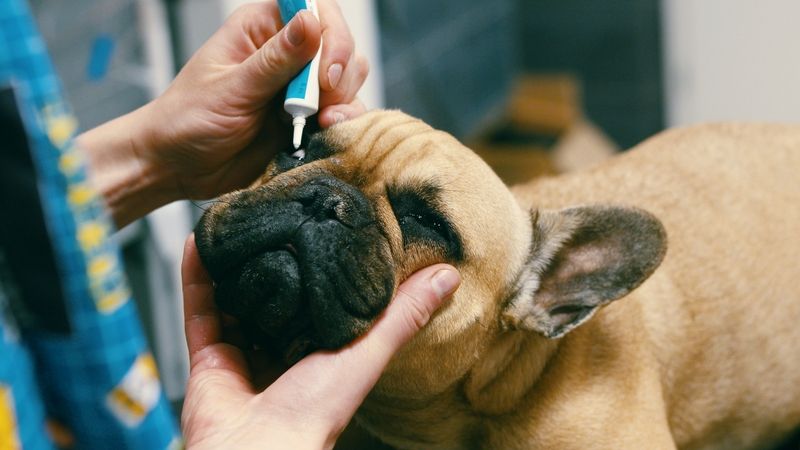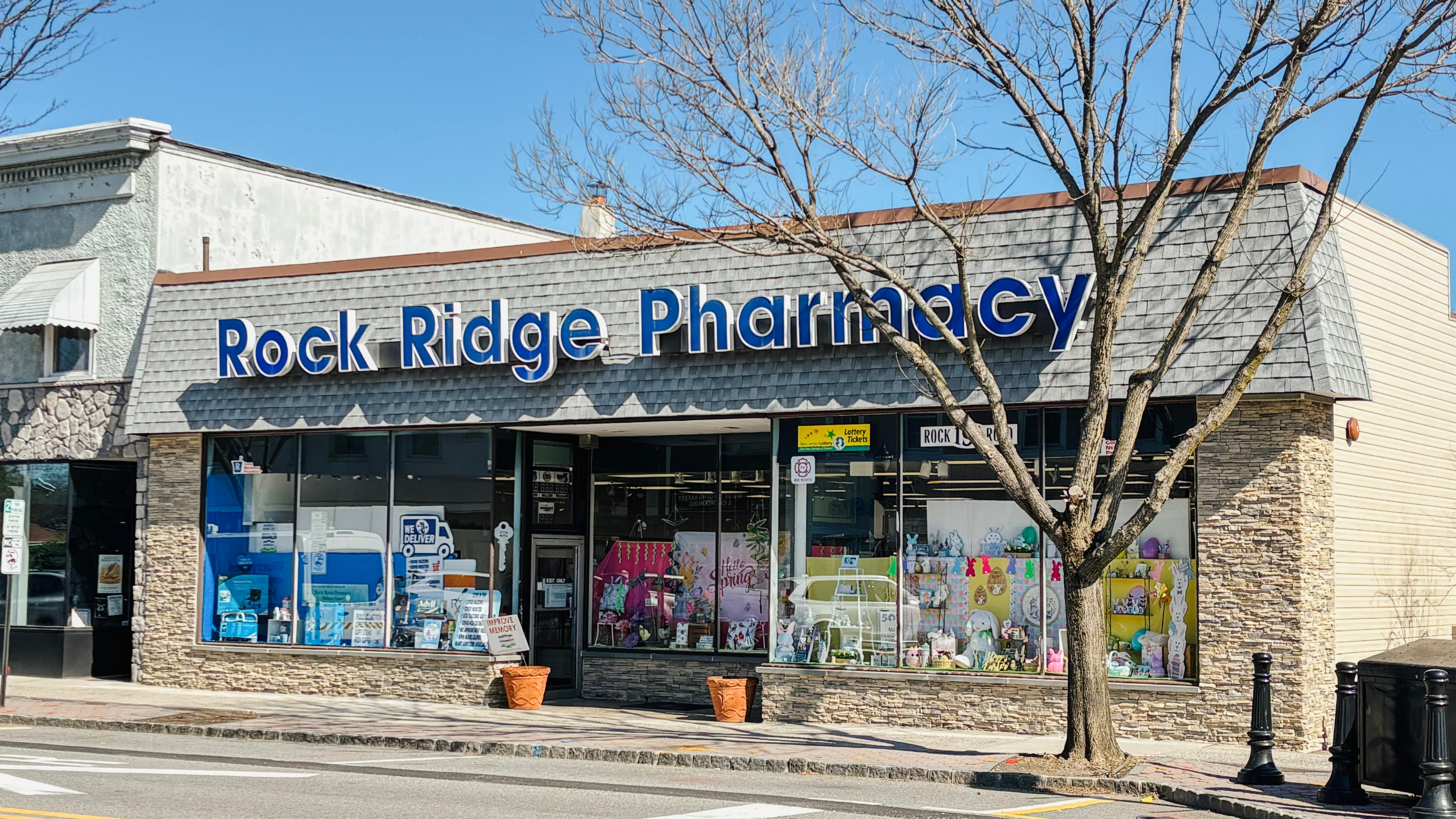Veterinary Ophthalmic Care • Prescription Required
Prednisolone Acetate Eye Drops for Pets
Custom-compounded anti-inflammatory ophthalmic solutions for pets with eye inflammation, conjunctivitis, or post-surgical recovery needs.
Veterinarian-prescribed • Pharmacist-guided • Pet-approved
What Is Prednisolone Acetate?
Prednisolone Acetate is a potent corticosteroid that rapidly reduces inflammation, swelling, and immune responses in the eye. It is one of the most effective treatments for acute eye conditions in pets.
Commonly prescribed for post-surgical recovery, conjunctivitis, and chronic inflammatory eye diseases in cats and dogs, it provides quick relief and supports healing.
Our prednisolone acetate drops are compounded in a USP <797>-compliant, ISO-class sterile facility, ensuring purity, consistency, and veterinarian-trusted quality.

Why Use Compounded Prednisolone Acetate?
While commercial options exist, compounding allows for tailored anti-inflammatory solutions when standard products aren’t ideal or available.
Custom Concentrations
Available in strengths like 1.25% or 1.5%, adjusted to your pet’s condition severity.
Preservative-Free
Formulated without preservatives to reduce irritation during sensitive healing phases.
Alternative Access
Reliable source when commercial products are unavailable or discontinued.
Combination Options
Can be compounded with other ophthalmic agents for simplified dosing regimens.
Pharmacist Expertise
Ensures potency, stability, and proper use under direct veterinary guidance.
How Prednisolone Acetate Works
Prednisolone Acetate is a corticosteroid that delivers fast and effective relief from inflammation, redness, and pain in pets with eye conditions.
Reduces Inflammation
Suppresses the inflammatory response that causes swelling and tissue damage in the eye.
Controls Immune Overactivity
Helps prevent immune-driven damage to delicate corneal and conjunctival tissues.
Relieves Pain & Discomfort
Reduces redness, swelling, and irritation for greater comfort during healing.
Enhanced Penetration
The acetate formulation penetrates well into eye tissues for stronger therapeutic action.
| Medication | Strength | Form | Base | Primary Use |
|---|---|---|---|---|
| Prednisolone Acetate | 1.25% | Eye Drops (15ml) | Aqueous Suspension | Eye inflammation, allergies |
| Prednisolone Acetate | 1.5% | Eye Drops (15ml) | Aqueous Suspension | Severe eye inflammation |
Understanding the Base Formulations
Sterile, preservative-free preparations optimized for inflamed eyes
Aqueous Suspension
Standard prednisolone acetate base with excellent ocular penetration for inflammation control.
Preservative-Free
Ideal for pets requiring long-term or frequent dosing, minimizing irritation risk.
Suspension Stability
Requires gentle shaking before each use to ensure consistent dosing and potency.
Cost Considerations
Standard suspensions are cost-effective; preservative-free versions add $10–15 per bottle.
How to Give the Drops
Step-by-step guide for safe application
Dosage Guidelines & Cost Considerations
Typical Dose
1 drop in affected eye(s) every 2–4 hours during the acute phase.
Treatment Duration
Short courses of 1–2 weeks, then taper as directed by your veterinarian.
Tapering
Gradual reduction to once daily before stopping — prevents rebound inflammation.
Monthly Cost
Varies with strength & frequency — call Rock Ridge Pharmacy for details.
If You Miss a Dose
Apply when remembered, but avoid doubling. Resume normal schedule.
Veterinary Guidance
Follow your vet’s exact tapering schedule — never stop abruptly.
Storage & Safety Information
Proper handling and monitoring of Prednisolone Acetate eye drops helps ensure safe, effective treatment.
Storage & Handling
- Store at room temperature: 59–77°F (15–25°C).
- Shake well before each use — suspension may separate.
- Protect from light and keep tightly closed.
- Do not freeze or expose to excess heat.
- Discard if clumps persist after shaking.
Safety & Side Effects
Common effects: brief stinging, mild irritation, or blurred vision after instillation.
Call your veterinarian if: redness or swelling worsens, discharge increases, or vision appears affected. Long-term use may raise eye pressure or delay healing.
Treatment Timeline & Cost Planning
Days 1–3
Intensive dosing every 2–4 hours during waking hours.
Cost: Highest usage period.
Days 4–10
Reduced to 2–3 times daily as inflammation improves.
Cost: Moderate with lower frequency.
Days 11–14
Tapering to once daily, then discontinue.
Cost: Lowest phase of treatment.
Total Course
Typical course runs 10–14 days.
Cost: Call pharmacy for estimate of complete course.

Why Choose Rock Ridge Pharmacy for Veterinary Eye Drops?
- PCAB-accredited & USP <797> sterile lab ensuring safety and quality.
- Veterinary compounding expertise trusted since 1950.
- Custom dosing & formulations for different species and conditions.
- Fast turnaround — most prescriptions ready in 1–2 business days.
- Pharmacist support for storage, use, and follow-up care.
Rock Ridge Pharmacy works with veterinarians and pet owners to provide safe, sterile, and personalized ophthalmic solutions backed by decades of trusted care.
FAQs About Prednisolone Acetate Eye Drops at Rock Ridge Pharmacy
Do I need a prescription?
Yes. Prednisolone acetate is a potent prescription medication that requires veterinary diagnosis and monitoring.
How much will this cost for a typical treatment?
Complete treatment courses typically cost $75–150 depending on strength, duration, and dosing frequency. Most treatments last 10–14 days.
Does pet insurance cover this medication?
Most pet insurance plans cover prescription medications when medically necessary. Keep receipts for potential reimbursement.
How quickly should I see improvement?
Most pets show significant improvement within 24–48 hours. If no improvement occurs within 2–3 days, contact your veterinarian.
Why do I need to shake the bottle so much?
This is a suspension – the medication settles to the bottom. Inadequate shaking means your pet gets mostly inactive ingredients instead of medication.
Can this be used long-term?
Generally no. Prolonged use can cause serious side effects including glaucoma, cataracts, and increased infection risk. Most treatments are 7–14 days maximum.
What if my pet's condition gets worse during treatment?
Stop medication immediately and contact your veterinarian. This could indicate a viral or bacterial infection that requires different treatment.
Can I use this with other eye medications?
Only if specifically prescribed together. Some combinations can be dangerous. Our pharmacist will coordinate with your veterinarian.
Is the preservative-free version worth the extra cost?
For sensitive pets or those requiring frequent dosing, the additional $10–15 cost is often worthwhile to prevent irritation.
What if I forget to shake the bottle?
The dose will be much less effective. Always shake vigorously for 10–15 seconds before each use.
Can this cause my pet to develop cataracts?
With short-term use (under 2 weeks), this risk is minimal. Long-term use can increase cataract risk, which is why treatment duration is carefully limited.
What if I miss several doses?
Contact your veterinarian before resuming. Gaps in steroid treatment can cause rebound inflammation.
Why is this more expensive than human prednisolone?
Veterinary formulations require special compounding, sterile preparation, and smaller batch sizes, increasing production costs.
Can I use human prednisolone eye drops?
No. Human formulations may have different concentrations, preservatives, or additives that could be harmful to pets.
What payment options are available?
We accept cash, credit cards, CareCredit, and can coordinate with pet insurance for direct billing when possible.
Is there a generic version to reduce costs?
Our compounded version is already cost-effective. We can work with your veterinarian to find the most economical effective concentration.
